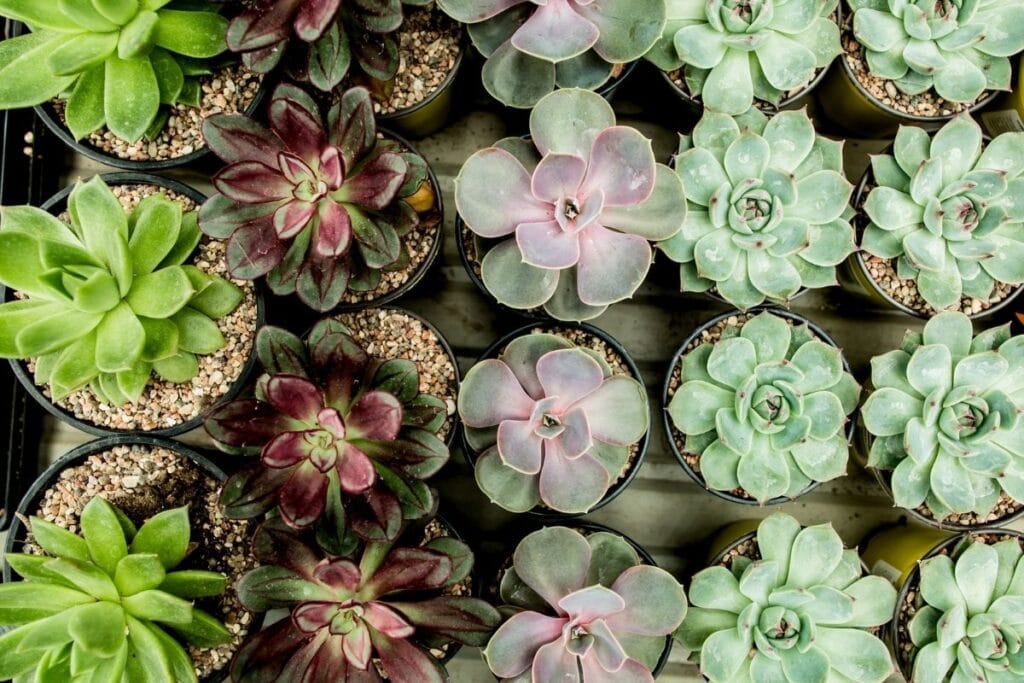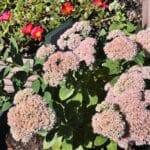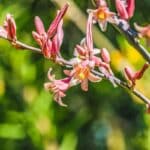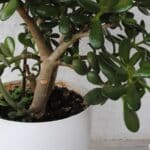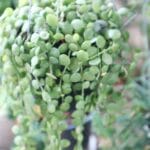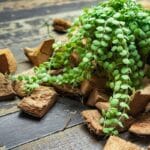Succulents are known for their structural appeal and while they are all individually captivating, a lot of gardeners and enthusiasts are fascinated with the kinds that have a rosette-type of growth.
These succulents are radially symmetrical and produce a textured, even colored compact mass of leaves that are so striking. It’s no wonder they are so popular.
If you are looking for flower-like succulents, there are hundreds of types to choose from, so we’ve listed some of the best-looking and easy to grow ones to get you started. But first, take note of the following guide to help you get to know and care for your rosette succulents.
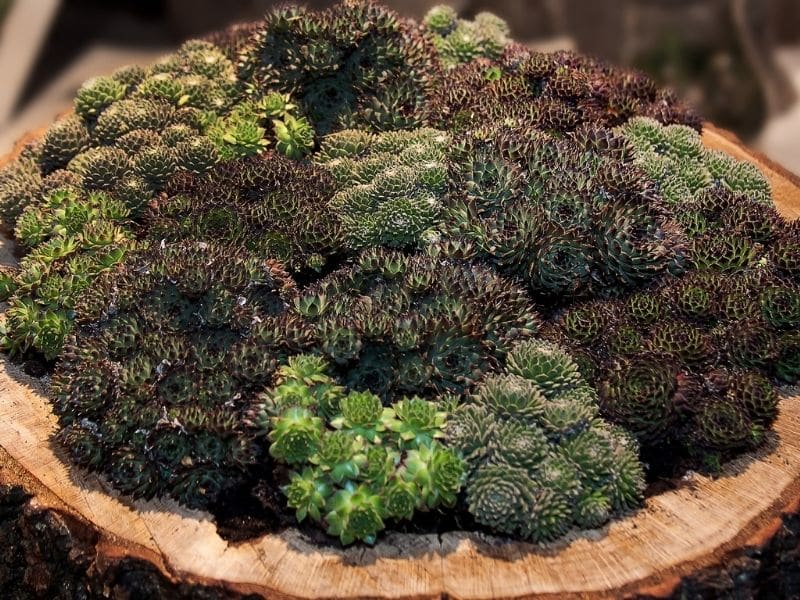
What are Rosette Succulents?
As the name suggests, rosette succulent plants are those having leaf formations resembling the petal arrangement of a rose flower. This is not a formal classification of succulents but a common reference to flower-looking plants with some even looking like carnation, tulip, water-lily, and daisy.
Rosette formations can occur in other kinds of plants too but for succulents, the cluster of fleshy leaves of the low-growing plants are arranged in an upward circular pattern, often overlapping and layered. This growth habit is the plant’s way to maximize the energy it’s able to harness from the sunlight.

There are various rosette plants under different genera, including Aloe, Echeveria, Haworthia, and Aeonium.
More and more flower-looking succulents are being added as the plant breeding community continues to develop hybrids and cultivars. New genera like Graptosedum, Sedeveria, and Pachyveria have resulted because of these efforts.
Do Rosette Succulents Produce Rose-like Flowers?
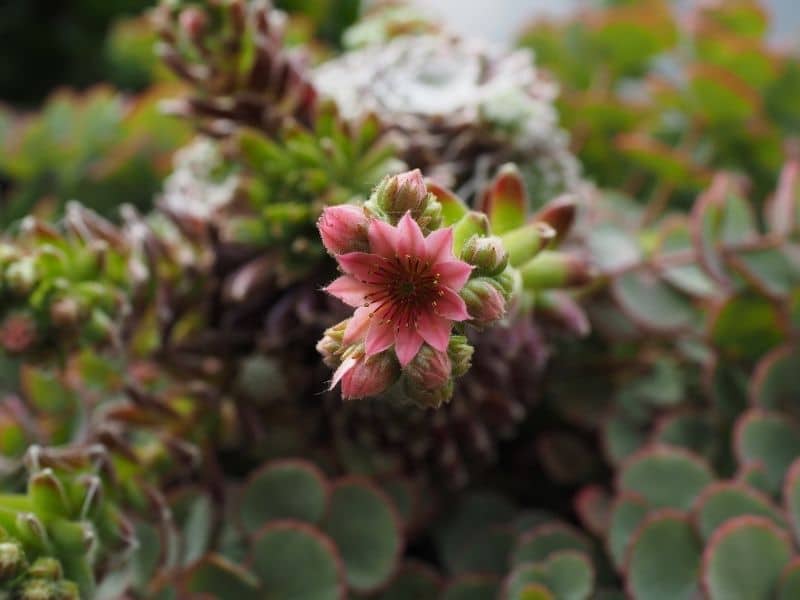
When succulents like Sempervivum, a.k.a. Hens and Chicks, bloom, the long-stalked flowers appear in the middle of the rosette. The flowers are small and look more star-like than roses.
Flowering also signals the death of the ‘hen’ or mother plant. There’s no need to worry though since these succulents produce many ‘chicks’ or offsets which turn into hens later on (1).
How Do You Care for Succulent Rosettes?
Rosette succulents require the same growing conditions and care as your regular succulents. They need a space with bright light and good air circulation. Well-draining, gritty growing medium is required and water should be applied sparingly to keep the roots from rotting.
Some rosette plants like bromeliads like to store water in the middle of the rosette but not for these succulents. Avoid misting as the leaves should be kept free from water droplets to prevent rotting and hydrophilic pests.
Since the radial and overlapping design of the foliage may make it difficult to clean the leaves, a brush or long tweezer is required to remove dirt on the leaf surface.
Rosettes like Echeverias tend to flatten or turn on one side when receiving insufficient light. Better sunlight exposure and rotating the plant 180 degrees once a week will keep the growth upright (2).
Basal leaves of rosette succulents are the oldest leaves and as the plant matures, these leaves will turn brown, dry, and crisp. It is perfectly normal and actually protects the plant from extreme heat and cold. They will naturally detach from the plant but if you find this unsightly, you can manually remove them but make sure to peel them without damaging the stem and other leaves (2).
For more detailed guidance, check our articles about succulent propagation, replanting succulents and succulent care on our blog.
Best Types of Rosette Succulents You Can Grow
Here are some popular varieties of succulent rosettes:
Haworthia
H. maraisii: This species has opaque dark green leaves with tiny spines running along the margins.
H. lockwoodii: In summer, this round rosette goes dormant by turning the upper half of the foliage papery dry as a way to protect itself from the scorching heat.
See more: Haworthia cooperi
Echeveria
E. nodulosa: The concave leaves of this unique Echeveria look like a blooming lotus flower in purple and green.
E. pallida: This species has a loose appeal with the bright green leaves growing wide and flat.
E. secunda: A drought-tolerant species, this has pointed curly blue-green leaves that come in layers.
E. ‘Lolita’: This hybrid succulent has wide and flat leaves that are green, gray, yellow, and pink at the same time.
See more: Echeveria Plant
Sempervivum
S. calcareum: An attractive succulent, a full head of rosette is made of pointed leaves in blue-green with deep purple to red tips.
S. jovibarba: This succulent can grow a cluster that looks like a bouquet of green chrysanthemums about to bloom.
S. arachnoideum: This symmetrical plant has green to burgundy pointy leaves with white spider web-like hairs radiating from the center.
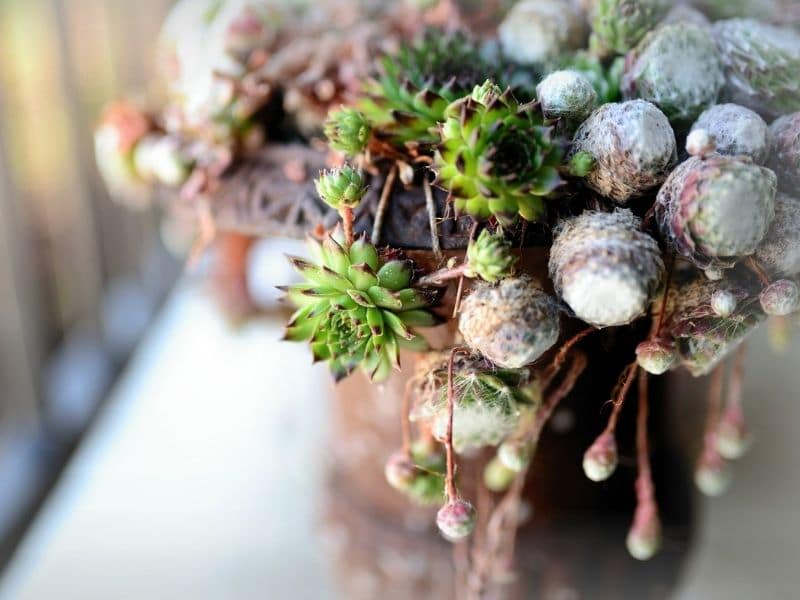
Aloe
A. polyphylla: This attractive rosette is made of bluish-green leaves arranged like they are spiraling out from the center.
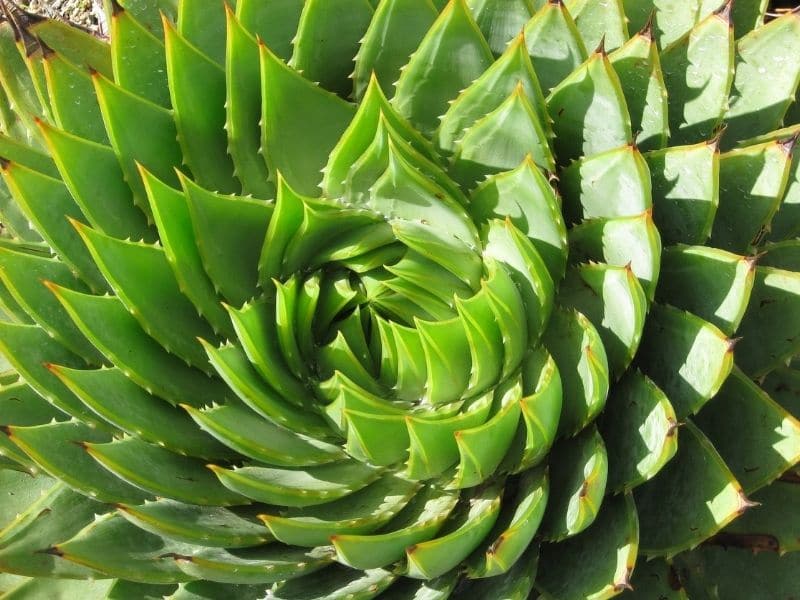
A. aristata: This is also called lace aloe for the thin leaves that start white from the base to dark green at the tip, peppered with spikes on the margin and white dots on the blade.
A. broomii: This aloe has stiff and broad leaves and green to bright green with sharp brown spikes along the margins.
See more: Types of aloe plants
Aeonium
A. nobile: This species grows close to the ground in the wild with giant green leaves tinged pink on the edges.
A. saundersii: A smaller aeonium, the leaves appear on slender stems looking like pink or green flower buds.
A. balsamiferum: This aeonium opens up like a normal rosette succulent plant but before this happens, they look like compact heads of roses with thick green petals.
Crassula
C. barbata: A crassula that looks exactly like a big rose head, except is green and covered in white hair-like cilia.
C. hemisphaerica: This rosette crassula has convex green to dark green leaves that grow on top of another.
C. tomentosa: This strange succulent produces leaves that appear like they are layered sideways making them look like a clamshell caught in another bigger clamshell.
See more: Crassula types
Graptopetalum
G. filiferum: This succulent produces a big head of leathery green leaves tapering at the tip until they look like soft thorns.
G. rusbyi: This attractive lotus-like plant has grayish purple leaves.
G. superbum: Another colorful graptopetalum, its leaves come in pale purple, pink, and even variegated.
P. compactum: The chubby leaves of this succulent are somewhat angular, gray-green on the base, and purplish at the tip.
Pachyphytum
P. oviferum: Pachyphytum oviferum has small egg-like leaves appear in a loose rosette that looks like pebbles on the ground.
P. hookeri: The leaves of this species are still stubby but elongated and curved, some varieties showing tinges of pink or purple at the ends.
Graptoveria
G. ‘Lovely Rose’: A very attractive succulent, the gray-green leaves appear like they are miniature roses gathered in a bouquet.
G. ‘Moonglow’: This vibrant succulent is blue with hints of purple and orange, making it look like it is glowing.
G. ‘Debbie’: Another lotus-looking succulent, the purple leaves are very attractive with the plant’s orange blooms.
Sedeveria
S. ‘Letizia’: A branching hybrid, this succulent has colorful leaves in a mixture of red and green.
S. ‘Starburst’: This plant produces several branches of star-like foliage heads in blue, green, and yellow.
S. ‘Jet Beads’: This loose rosette is made of deep burgundy, almost black with a tinge of green at the base leaves arranged along a hardy stem.
Graptosedum
G. ‘Francesco Baldi’: The branching habit of this plant makes it an effective and attractive ground cover with its cool bluish-purple color.
G. ‘Little Beauty’: This hybrid may be little but its compact green and orange rosettes make it stand out in a pot or a landscape.
G. ‘California Sunset’: The rosette of tiny boat-like leaves is orange with hints of green that is intensified when the plant is exposed to the bright sun.
Pachyveria
P. glauca ‘Little Jewel’: This plant may seem like a normal mum-like rosette but upon closer inspection, the leaves have angled edges like that of crystals and jewels.
P. ‘Myrtilla’: This hybrid has wide, almost flat leaves that change from purple to green to blue in color depending on the level of exposure to sunlight.
P. ‘Clavifolia’: The cool color of echeveria and stubbiness of pachyphytum are exhibited in this low-growing rosette succulent.
If you love learning more about succulents, check these succulent plant representative species.
References
Reference List:
(1) Charles, G. Cacti and Succulents: An Illustrated Guide to the Plants and their Cultivation. Crowood. 2014. P. 192.
(2) Baldwin, D. Succulents Simplified. Timber Press. 2013. P. 272.
Close
Featured photo by depositphotos.com/K.Decor

